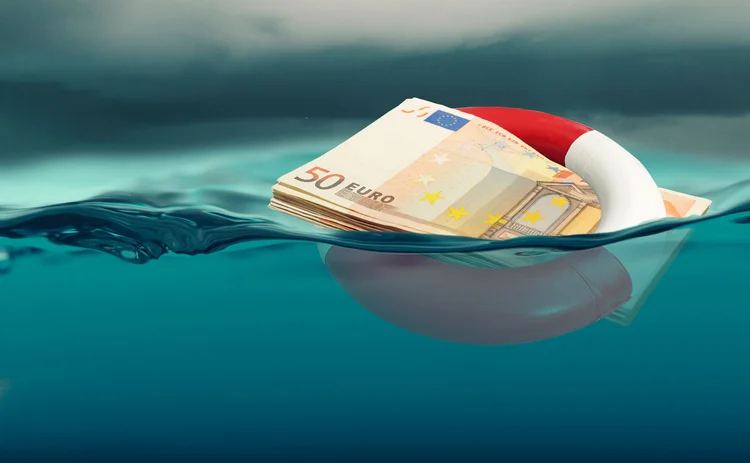Bunds’ hedging role for euro swaps still in question
Dealers seek ultimate hedge for euro swaps amid EGB rush following Trump tariffs

Towards the end of last year, the question on many European rates traders’ lips was: what is the most effective hedge for euro interest rate swaps?
Previously, the answer to the question was the German government bond and its related futures contract. That assumption, however, was challenged after the fixed leg of 10-year euro interest rate swaps started trading below the nominal yield on the German bund for the first time in history in November 2024.
The question was raised again after the leader of the incoming German government announced plans to bypass the country’s strict debt ceiling rules to raise funding for defence and infrastructure spending, with yields on 10-year German bunds rising to 2.79% on March 4 and the euro swap spread being pushed further into negative territory.
Several months on, the answer is still unclear.
For some dealers, it has meant a rethink of the construction of their models, which are based on German government bonds being the risk-free reference rate. Some have considered whether a basket of European government bonds (EGBs) might be the answer – some bunds, mixed with some French or Italian debt. Others are looking at a potential move to the European Commission’s bonds.
The uncertainty was alleviated somewhat after US president Trump’s tariff announcement resulted in investors moving out of US Treasuries into EGBs, with 10-year bunds falling 45 basis points to 2.44% between March 11 and April 30, pushing the euro swap spread 12bp back into positive territory to -1.4 bp in the same time period.
One head of euro rates trading at a European bank partly attributes the move to a realisation in Europe, while the tariffs were being announced, that the proposed German defence and infrastructure spending plan wasn’t going to happen overnight but would instead take years to implement.
Despite the move into EGBs, the rates head says the concerns about the safe haven status of German government bonds didn’t go away.
“I don’t think a lot changed, it’s just that narrative faded away because there’s a much more dominant narrative at the moment, and this is the US tariffs,” says the rates head.
With the moves in bund yields this year, the head of fixed income at a Dutch pension fund manager says they believe the euro swap curve is increasingly being perceived as the real risk-free rate in Europe.
At the same time, physically deliverable EU bond futures are getting closer to fruition.
In April, Eurex announced it would launch a physically deliverable EU bond future in September – a proposal that has been on the cards for several years but failed to gain traction due to questions over the maturity of the EU bond market, and uncertainty over future issuance.
Dealers in November said they were beginning to use EU bonds over euro swaps as proxy hedges for EGBs, with the correlations between EGBs and EU bonds strengthening due to an increase in secondary market liquidity for EU bonds as well as ongoing quantitative tightening by the European Central Bank.
For some, though, the German government bond’s hedging role for European swaps is secured because, as Wouter Sybrandy, a rates trader at Dutch pension fund manager PGGM puts it, right now “there’s a lack of a better alternative”.
Editing by Lukas Becker
Only users who have a paid subscription or are part of a corporate subscription are able to print or copy content.
To access these options, along with all other subscription benefits, please contact info@risk.net or view our subscription options here: http://subscriptions.risk.net/subscribe
You are currently unable to print this content. Please contact info@risk.net to find out more.
You are currently unable to copy this content. Please contact info@risk.net to find out more.
Copyright Infopro Digital Limited. All rights reserved.
As outlined in our terms and conditions, https://www.infopro-digital.com/terms-and-conditions/subscriptions/ (point 2.4), printing is limited to a single copy.
If you would like to purchase additional rights please email info@risk.net
Copyright Infopro Digital Limited. All rights reserved.
You may share this content using our article tools. As outlined in our terms and conditions, https://www.infopro-digital.com/terms-and-conditions/subscriptions/ (clause 2.4), an Authorised User may only make one copy of the materials for their own personal use. You must also comply with the restrictions in clause 2.5.
If you would like to purchase additional rights please email info@risk.net
More on Our take
Why a Trumpian world could be good for trend
Trump’s U-turns have hit returns, but the forces that put him in office could revive the investment strategy
Roll over, SRTs: Regulators fret over capital relief trades
Banks will have to balance the appeal of capital relief against the risk of a market shutdown
Thrown under the Omnibus: will GAR survive EU’s green rollback?
Green finance metric in limbo after suspension sees 90% of top EU banks forgo reporting
Has the Collins Amendment reached its endgame?
Scott Bessent wants to end the dual capital stack. How that would work in practice remains unclear
Talking Heads 2025: Who will buy Trump’s big, beautiful bonds?
Treasury issuance and hedge fund risks vex macro heavyweights
The AI explainability barrier is lowering
Improved and accessible tools can quickly make sense of complex models
Do BIS volumes soar past the trend?
FX market ADV has surged to $9.6 trillion in the latest triennial survey, but are these figures representative?
DFAST monoculture is its own test
Drop in frequency and scope of stress test disclosures makes it hard to monitor bank mimicry of Fed models








